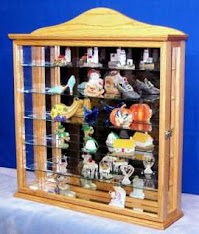Throughout the past twenty years as a woodworking industry leader, we have received a lot of questions about abrasives. One of the top questions is how we grade our sandpaper. This question comes up because ours in some cases, might feel a little different compared to another with the
same grit number.
There are four main categories of abrasive grades available in today's market. Klingspor's Woodworking Shop uses the "P" grading system, or the Federation of European Producers of Abrasives (FEPA), which is used by almost all European abrasive manufacturers and like the metric system, is now being implemented by virtually all manufacturers around the world - including the US manufacturers. Simply look for a "P" preceding the grit number on the backing of your abrasive. If it's "P" graded, it should have this designation. Another common scale used to be called the Coated Abrasives Manufacturers Institute (CAMI) scale. This was primarily used by US manufacturers, but is being phased out by most. The CAMI scale has some slight differences to the P-grade scale in the finer grits, so attention should be paid above 220 grit in some instances. A third grading system used is the Micron scale, normally used with a product that is film-backed. The fourth scale is the old Aught scale,which was used many years ago and is still seen in some floor sanding abrasive applications.
See our online chart for the scales and how they compare to one another. Klingspor's Woodworking Shop carries almost every grit in every material, depending on the type. So you'll be able to better "fine-tune" your sanding application.
 Master Craftsman Bill Rafferty handcrafts Curio Cabinets one at a time. Being in business for over 20 years, He offers the highest standard of quality control. Bill specializes in Curio Cabinets with mirror back & adjustable glass shelves popular with collectors and businesses for displaying collectibles. All Curio Cabinets are built from solid oak in the traditional style with modern day touches to showcase any collection in style. Color selections include Aged Oak, Dark Walnut, Golden Oak, Honey Maple, or White Wash.
Master Craftsman Bill Rafferty handcrafts Curio Cabinets one at a time. Being in business for over 20 years, He offers the highest standard of quality control. Bill specializes in Curio Cabinets with mirror back & adjustable glass shelves popular with collectors and businesses for displaying collectibles. All Curio Cabinets are built from solid oak in the traditional style with modern day touches to showcase any collection in style. Color selections include Aged Oak, Dark Walnut, Golden Oak, Honey Maple, or White Wash. 


